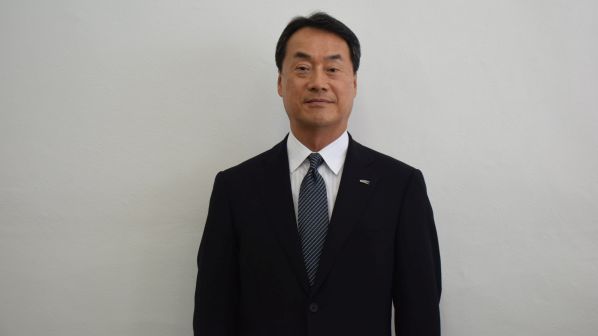J-TREC, which can trace its history back to 1948 as Tokyu Kogyo Corporation Yokohama Works before becoming Tokyu Car Corporation in 1953, was taken over by East Japan Railway (JR-East) in 2012. The company has three plants in Yokohama, Niigata, and Wakayama and specialises in the production of EMUs ranging from high-speed to commuter trains, as well as freight containers.
J-Trec currently has about one-third of the Japanese market for railcars, as Mr Takao Nishiyama, the company’s president, explained to IRJ. “We have the top share in the domestic railcar market in Japan,” Nishiyama says. “The scale of the railcar manufacturing market in Japan has been in the range of 1500 to 1700 cars in the last few years. In 2019, the number of railcars manufactured by J-Trec was about 500, which is a little more than in the previous year and our factory production rate is maintained at a high level. As a highlight for 2019, the 500-scale railcar replacement of the JR East Yamanote Line fleet was completed in December 2019.”
Another major success occurred in July 2019, when J-Trec was awarded a $US 230m contract in a joint venture with Sumitomo Corporation for a fleet of 13 eight-car EMUs for the Manila North - South Commuter Railway (PNR Clark Phase 1) in the Philippines. The EMUs will be based on J-Trec’s Sustina stainless steel-body product platform, and will have a design capacity for 2242 passengers.
The European Union-Japan trade deal came into effect on February 1 2019, and according to the EU, is designed to remove tariffs and other trade barriers and create a platform to cooperate to prevent obstacles to trade. The EU says the trade deal will help to shape global trade rules in line with its high standards and shared values, and will send “a powerful signal that two of the world’s biggest economies reject protectionism.”
Positive benefits
Overall, Nishiyama sees some positive benefits of the trade deal, as he explains. “The adoption of equipment and parts by overseas suppliers has already progressed and there are no major impacts or concerns. If the quality of equipment and parts by overseas suppliers improve and the costs are reduced to meet the requirements of railway operators and railcar manufacturers in Japan, I think this is preferable because it creates a good competitive market with existing Japanese suppliers. In that case, the construction of a high-quality after-sales service system for railway operators who are the final users will be an issue.
“We have already manufactured railcars for domestic use that have adopted the products of overseas suppliers and we have also collaborated with international suppliers in overseas projects. Especially in the case of overseas railcar projects, there are some advantages in cooperating with international suppliers who have abundant experience in overseas technological standards. In the future, we would like to deepen cooperative relationships with them as we expand our projects in the overseas market.”
“I think the Asian market that we have already entered into is the centre, but we will seriously consider joining projects in other areas such as Europe if we can demonstrate our strengths.”
Takao Nishiyama, president of J-Trec
Nishiyama is also optimistic about the overseas market for new trains. “Demand for the development of new railway lines is expected to remain high worldwide, especially in Asian urban areas, and the provision of railcar maintenance services to railway operators with limited operation experiences is a promising business model,” he told IRJ. “In particular, as a member of JR East group, we would like to enter this field by utilising the abundant maintenance technology and know-how of our parent company.
“I think the Asian market that we have already entered into is the centre, but we will seriously consider joining projects in other areas such as Europe if we can demonstrate our strengths. We will strive to acquire the technical capabilities to develop attractive railcars tailored to each market such as Europe and Asia.
“Although we do not have direct transactions or competitions with Chinese suppliers, we believe that quality, cost, delivery period, after-sales service and so on, are key factors in determining relationships with all stakeholders, not just with Chinese suppliers.”
As far as the development of new technologies is concerned, J-Trec is pursuing a number of avenues, as Nishiyama explains. “We have developed and manufactured diesel hybrid railcars and battery-powered railcars for domestic use. From the perspective of global environmental issues, the use of such railcars is expected to increase in the future but cost competitiveness will be an issue compared with existing diesel railcars. I think further efforts to reduce costs will be indispensable.
“We would like to make Sustina, our brand for stainless steel commuter railcars, of higher quality and lower cost, and to make it a more attractive product with cutting-edge technologies such as artificial intelligence and the Internet of Things. We will also consider participating in the development of the next-generation Shinkansen train for JR East to accumulate and improve design and manufacturing technologies for high-speed trains.
“We have already commercialised a derailment detection system realised with our own algorithms by using acceleration sensor technologies and low-cost onboard digital signage by using consumer devices.
“We will continue to improve the value of railcars by introducing more reliable autonomous driving systems while applying cutting-edge ICT technology,” Nishiyama concludes.

